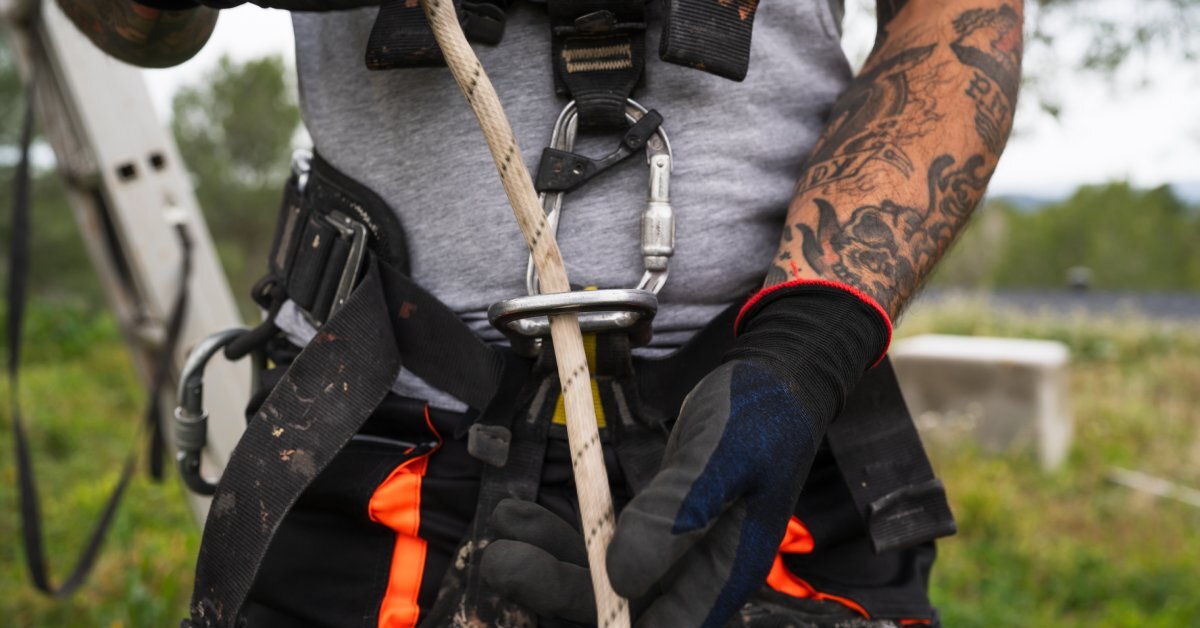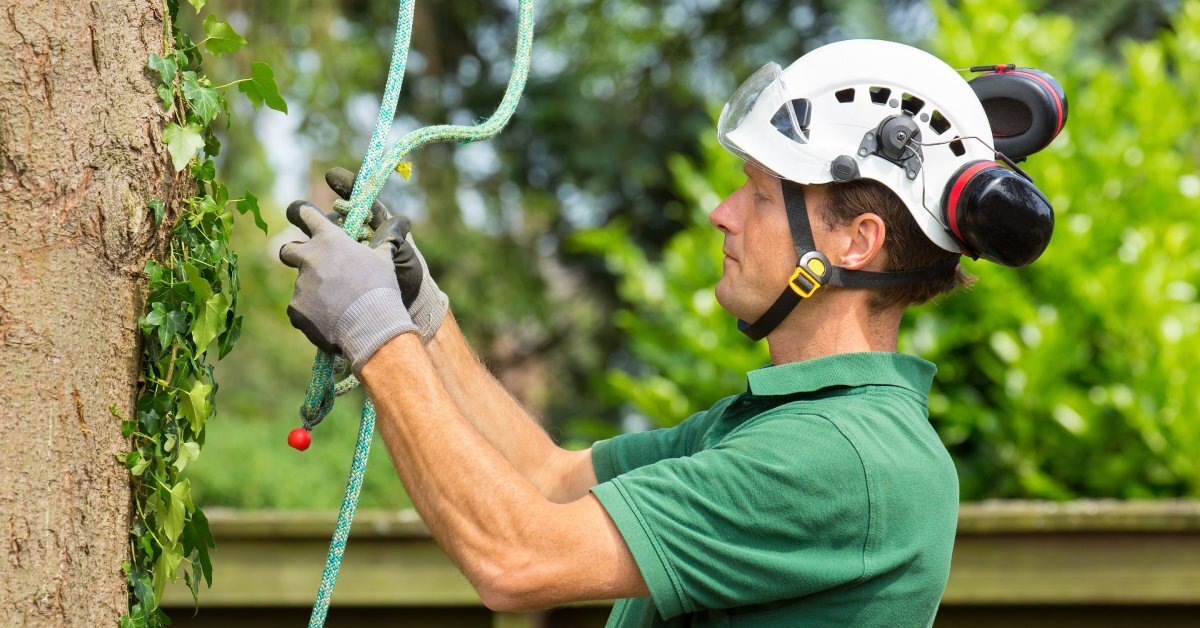Ever wonder why arborists are so particular about their ropes? If you’ve been trying to figure out the difference between static and dynamic ropes and which is right for you, you’re in the right place. Choosing the correct rope isn’t just about preference; it’s about safety, efficiency, and getting the job done right.
This post breaks down several key differences between static and dynamic ropes that every arborist needs to know. We’ll cover how each type performs, when to use them, and why the right choice could make all the difference during your next climb or job.
Let’s untangle the details and get you climbing safely and efficiently!
Elasticity and Stretch
Precision is crucial for arborists, which is why ropes with minimal stretch, such as static ropes, are often the go-to. This low elasticity keeps movements predictable and stable, especially when managing tools or loads while working at height. Rigging and positioning tasks become much easier with this type of rope.
On the flip side, ropes that stretch under tension, like dynamic ones, are specially designed to absorb shock during a fall. This quality is a lifesaver for activities like rock climbing but can hinder tree care work. A rope that stretches can complicate tasks requiring exact movements or steady positioning.
Durability for Daily Use
Ropes in tree care often endure continuous tension, friction, and repeated use with hardware like pulleys and climbing devices. Static options excel here, standing up to extended wear without losing strength. The materials and construction are engineered to handle the intense demands of professional arborists over time.
On the other side, dynamic ropes aren’t built for constant, prolonged pressure. They’re designed to handle sudden forces, such as catching a climber’s fall, but degrade faster when subjected to steady loads. If your work involves climbing ropes for tree care on a frequent basis, a static rope lasts longer and performs more consistently under demanding conditions.

Weight and Handling
Saving energy and reducing fatigue is a daily battle for an arborist, and lighter equipment can make all the difference. Static ropes are typically lighter and easier to maneuver, making them ideal for work that often requires scaling tree canopies or hauling gear to high points. Their thin-yet-durable design simplifies handling during hours of tree care.
On the contrary, dynamic ropes tend to weigh more because of their core construction, designed to stretch under stress. While great for recreational climbing where safety may depend on a rope’s shock-absorbing ability, the added bulk can slow arborists down during a job. The heavier a rope, the more taxing it can be to work with repeatedly throughout the day.
Knot Performance
For an arborist juggling complex climbing systems, a rope that holds knots reliably is non-negotiable. Knots tied in a static rope tend to stay secure thanks to the rope’s rigid construction. Adjustable and fixed knots, whether for anchoring or redirects, remain stable and instill much-needed confidence during climbs.
Dynamic ropes, however, introduce a layer of unpredictability. Their stretch can cause knots to loosen over time, potentially creating hazards when you least expect them. The elasticity might be a lifesaver in other scenarios, but in tree care, confidence in your knots can often outweigh the rope’s ability to absorb shocks.
Compatibility With Tools
Arborists frequently rely on devices like ascenders, descenders, and pulleys to make their work safer and easier. Static ropes slide smoothly through these tools, maintaining consistent performance and providing better control. This compatibility ensures tasks like ascending, rigging, or canopy movement remain efficient and precise.
When a rope has stretch, as with dynamic options, tool functionality can suffer. Devices may grip unevenly or operate less predictably, which disrupts workflow and might even introduce risks. The role mechanical devices play in daily tree care makes the pairing with static ropes an almost universal standard for professionals.
Shock Absorption vs. Stability
Stretching under force is what dynamic ropes are made for. This ability to cushion a climber’s fall absorbs impact and limits strain on the body, making these ropes a popular choice for activities with frequent fall risks. However, in arborist work, where proper setup and precaution aim to avoid falls altogether, this secondary benefit becomes less valuable.
By contrast, static ropes are celebrated for their rigidity and stability, especially when handling heavy branches or tools. The lack of stretch makes them dependable under load, particularly when precision matters most. For arborists, stability and exact control often outweigh the need for shock-absorbing features.
Cost and Value
A versatile and long-lasting rope is a worthy investment. Static ropes generally cost less than their dynamic counterparts while delivering the durability needed for the physical demands of tree care. It’s not just about the up-front expense but the lifespan and reliability that make static ropes a preferred financial choice.
Dynamic ropes, in comparison, come with a higher price point due to their specialized design. For climbers tackling challenging routes or needing fall arrest properties, the extra investment is justified. However, tree care doesn’t often call for the features dynamic ropes provide, leaving static options as the clear winner for value in this field.

Suitability for Arborist Tasks
Every rope has its purpose. Static designs shine in arborist work, offering the dependability and control needed for tasks like pruning, hauling, and rigging. Professionals trust these ropes to streamline their process and perform well under pressure. Using the right tools for the job makes projects safer and more efficient.
Dynamic ropes, on the other hand, are better suited for recreational climbing and emergency rescue operations. Their unique characteristics make them great in certain situations but less effective in the professional tree care space. By aligning your rope choice with the specific demands of your work, you set yourself up for success in even the most challenging scenarios.
Final Thoughts
When it comes to selecting the right rope, understanding the differences between static and dynamic ropes for arborists is only part of the equation. How you apply that knowledge to your day-to-day work can transform your approach to it. Take the time to assess your typical tasks and the conditions you face. Do you need precision and control for rigging and hauling? Or are you tackling situations where flexibility plays a bigger role?
Equipping yourself with the right tools tailored to your profession not only improves efficiency but also enhances safety and confidence. If you’re ready to take that next step, start by identifying which qualities matter most to you, and explore rope options that align with those priorities. The right rope isn’t just a tool; it’s a partner in making your job easier, safer, and more effective.

